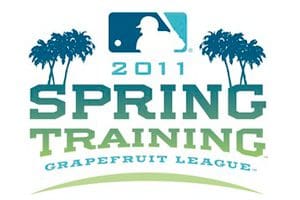 The Toronto Blue Jays begin spring training on Monday in preparation for what hopes to be a “successful” 2011 baseball season.
The Toronto Blue Jays begin spring training on Monday in preparation for what hopes to be a “successful” 2011 baseball season.
Success for the Jays this year can be defined in many ways. The season will be a success if they simply win more games than they lose or can make it through September without losing any of their fine young pitchers to career-threatening injuries. Success would be finding out that Kyle Drabek is the real deal and can become a close substitute for pitching ace Roy Holiday (who left in the trade that brought Drabek to the Jays). Success would be proving that 2010 was an aberration for Aaron Hill and Adam Lind, who really can hit major league pitching consistently, and wasn’t an aberration for Jose Bautista, who hopefully was not a one-season-wonder and can be a consistent power threat who hits over .270 in years to come. Success is Travis Snyder fulfilling his potential and playing an above-average left field, hitting with power/average and staying injury-free. Success would be if J.P. Arencibia can hit major league pitching but, more importantly, can catch and handle a pitching staff at the major league level. If Yunel Escobar can shred the “hot dog” label, utilize his athletic potential and become one of the top fielding and hitting shortstops in the majors. If they can have a top-end bullpen without having “the man” as a closer. If John Farrell can manage an entire ball club as effectively as he coached a pitching staff in Boston. Any and all of these things could make the Blue Jays’ 2011 season a true success.
None of these “success” benchmarks will or can be achieved in spring training, that determination begins when they start to play baseball games for real on April 1st. Spring training does, however, begin the process that lays the foundation for their accomplishment. So, what are the key questions, the things we should look for when the Blue Jays spring training camp opens and heats up?
First and foremost is who is in the trainer’s room. The Blue Jays played last year relatively injury-free, especially with respect to their pitching staff. Manager Cito Gaston and pitching coach Bruce Walton went to great lengths to protect their young pitchers from throwing too many pitches during a game or throwing too many innings during the season. Hopefully their efforts will pay off and as the pitchers loosen up, lengthen and strengthen their arms, they are not sidelined with any significant tenderness indicating tendinitis or worse.
Second, can Adam Lind move his feet well enough to play first base? A big part of a pitcher’s game is how well the team plays defence behind them. If Adam Lind makes the conversion from DH to 1st base effortlessly that will allow him to focus better at the plate. If he slumps at the plate, as he did last year, that, in turn, could affect his fielding and we could see a lot more of Edwin Encarnacion playing first base, a position that he has not played before on the major league level.
Third, which of the three newly acquired, “back of the bull pen” relievers will take charge and try to become “the man”? Jon Rouch, Octavio Dotel and Frank Francisco will all be given a chance to show that they can fulfill this role. If they don’t, then it could be closer-by-committee, which often leads to inconsistency and blown games. This would not be good for the emotional confidence and stability of the young starting pitching.
Fourth, can “small ball” replace “long ball” effectively so the Jays have a more consistent offense? Replacing the 72 homers produced by Vernon Wells, Lyle Overbay and John Buck collectively last year will not be easy, even if acquired-centre-fielder Rajai Davis steals 50 bases like he did last year. To be productive, the team will have to acquire a new offensive mindset and polish up on the fundamental skills of bunting, hitting behind the runner and taking the extra base. These are the skills that they haven’t shown to be very proficient at in the last few years.
Fifth, who will become the new “in the club house” leader? For the most part, baseball players govern and manage themselves. Usually one or two veteran players will step up and set the tone and atmosphere in the club house. They lead by example on how the players will prepare and handle themselves as the season unfolds. By trading away Shawn Marcum and Vernon Wells, a huge leadership void has been created, and over the course of 162 games that void can swallow up and destroy an entire ball club. Aaron Hill and Ricky Romero are the two obvious choices to fill these leadership roles, but that just adds additional stress/responsibility to a player who is trying to rebound from a sub par offensive season and another who is beginning only his third full season as a major league pitcher.
These questions illustrate what spring training is all about: getting in shape but staying healthy; learning new skills; finding out who will step forward and fill in the gaps in the lineup; developing team cohesiveness offensively, defensively and, most importantly, in the club house. You don’t win the World Series in the spring, but you certainly can start putting the pieces together effectively so, when the “boys of summer” begin to play for real, they can make a legitimate run for the playoffs. For this reason alone, spring training is always fun and an important time to watch.
